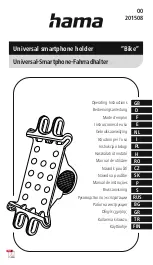
120 20195-100 Preliminary
Paragon4 – UHF, 700, & 800MHz User Manual
9
2.5
Antenna
2.5.1
Overview
The Paragon4 unit commonly uses three antennas (one transmit and two receive) unless a duplexer is
used with one of the receive antennas; then only two antennas would be needed. If the 10MHz Disci-
plined Clock option is sought, there is another GPS antenna is adittion to the three already mentioned.
They should be mounted according to any guidelines supplied with the antennas. For antennas place-
ment and spacing, consult System Engineering.
2.5.2
Cabling and Connection
1-
Route good quality 50-ohm double-shielded coaxial cable(s) (e.g. RG-214 or Heliax) from the
selected antenna position(s) to the Paragon4 Radio assembly.
2-
Referring to Figure 2 for locating modules, terminate the RX-1 and RX-2 cable-ends at their re-
spective module rear position with N-type connectors.
3-
Similarly, terminate the TX cable-end at the rear position of the Power Amp’s module with an
N-type connector.
Caution:
When terminating RF cables use brand-name crimping tools (such as AMP, Jensen,
Crimp-Master, etc…) of the correct size for the cable and type of connector used.
Common pliers are NOT acceptable.
2.6
Completing the physical Installation
Paragon4 products are factory-configured to user’s requirements and are shipped ready to run.
After new installations:
•
Re-check that all connections are secure on the radio-modem assemblies (antennas, PC, power
cords etc.)
•
Check that fuses are inserted.
•
Turn power supplies ON.
You are now ready to check for normal operation (as per paragraph 2.7) and to run the Dataradio web
interface (described in section 4) for testing or trouble-shooting.
Any change(s) to the settings must be done via files saved on diskette and loaded into the unit using
the web interface program.
2.7
Checking out Normal Operation
1-
Check that power is applied.
2-
Check Radio assembly lights for proper operation as per section 3.1
3-
Check for proper operation of the BSCs LEDs.
4-
Using the web interface program and an in-line wattmeter, check forward & reverse power to
confirm main antenna installation.
5-
Using the web interface, check the RF Data Link with a mobile that can be heard.
If user application and mobiles are available, test the installation by going through a normal sequence
of transmitting and receiving messages.
















































